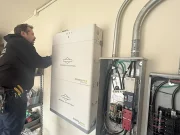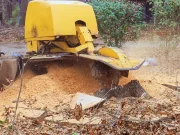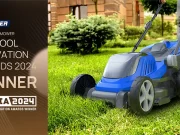With winter finally coming to an end, a spokesperson for Homestars.com, the reliable way to hire a pro, says that April is the perfect time to begin getting your yard in the best possible condition as longer days and warmer weather arrive.
Wind, snow and ice may have caused damage to your fence, lawn, tools and plants, all of which may need repairing or replacing. If your yard maintenance jobs require the help of a professional, book them soon to get the pro that is right for you, as spring starts off the busiest period of the year for gardeners.
Colleen McGrory, from Homestars.com, says that by completing as many maintenance tasks as possible now, you will be able to enjoy spending time in your yard once the nice weather arrives.
“Winter is finally coming to an end. and now is the perfect time to start fixing your yard, whether you need to mend your fence or prune your plants. By the time summer arrives, you will be able to relax instead of repairing winter damages.
“I would also advise you to book a gardener now, as they tend to get booked up very quickly during hotter periods of the year.
“But even if your jobs don’t require a pro, get started soon. Otherwise, you will be dealing with summer problems, such as keeping your grass moist, while sorting out your post-winter maintenance issues, and you won’t be able to relax.”
Below are expert recommendations on what to do — and what not to do — to get your yard and garden in good shape for the spring and summer ahead.
DO:
Prune your trees and plants
After the winter freeze, your plants will likely have dead branches and stems that are either bare or have brown, wilted leaves. Removing these items will allow your vegetation to recover from the effects of winter and start to regrow, leaving your garden with a thriving array of desired plants ready for summer.
Repair your fence
Stormy weather, wet ground, and general cold and moisture can cause fence posts to rot and panels to sustain damage. Check your fences, especially the posts, to see if they are wobbly;if so, consider if they can be repaired or need replacing. If they can be repaired, make sure you have the right tools and materials to fix them, including the right screws, spare wood, and woodstain or treatment. If they need replacing, it might be easier to employ a fencer to ensure a long-lasting, sturdy fence.
Book a professional if needed
If your gardening job requires an expert, make sure to contact a professional as soon as possible, as they get booked up quickly. Statistics have shown a trade-skill shortage poses a threat to the country with 700,000 pros set to retire by 2028. Gardeners are often in short supply as the weather improves, so get one arranged as soon as possible.
Test your soil’s pH level
Now is the time to get your plants in the best possible shape. Knowing the soil pH level that each of your plants requires, then testing the level in your soil, will help optimize their growth and allow your garden to thrive. Soil pH testing kits will help you understand each of your plants’ needs before you start to grow them.
DON’T:
Ignore pest invasion
Although not all pests are harmful to your garden, some, including snails and slugs, are prone to munching on plants and may ruin the appearance of your garden as a result. To keep them away, create leaf or rock piles, which help attract snail and slug predators. Alternatively, you can use food items, such as fruit or salt, to lure them away from your garden.
Cut wet grass
Climate change has increased rainfall in Canada, which has resulted in wetter yards. Data from Homestars.com says that nearly a third (31 per cent) of Canadians have been unable to use their yards due to extreme weather conditions. Cutting your grass can be tempting, but doing it when it’s wet risks leaving your lawn uneven and ragged as a result, and can also damage your lawnmower.
Walk on your grass
While cutting grass after wet weather can be damaging to your yard, even walking on it can be a problem, especially during colder periods. Walking on an icy lawn could crush the grass and leave brown patches when it starts to grow, which would leave your yard in visibly poor condition as summer starts.








































